Cadillac CTS-V 2005 Owner's Manual

2005 Cadillac CTS/CTS-V Owner Manual M
Seats and Restraint Systems ........................... |
1-2 |
Front Seats ............................................... |
1-2 |
Rear Seats ............................................... |
1-6 |
Safety Belts .............................................. |
1-8 |
Child Restraints ....................................... |
1-28 |
Airbag System ......................................... |
1-48 |
Restraint System Check ............................ |
1-63 |
Features and Controls ..................................... |
2-1 |
Keys ........................................................ |
2-3 |
Doors and Locks ....................................... |
2-8 |
Windows ................................................. |
2-14 |
Theft-Deterrent Systems ............................ |
2-18 |
Starting and Operating Your Vehicle ........... |
2-22 |
Mirrors .................................................... |
2-41 |
OnStar® System ...................................... |
2-45 |
HomeLink® Transmitter ............................. |
2-47 |
Storage Areas ......................................... |
2-51 |
Sunroof .................................................. |
2-53 |
Vehicle Personalization ............................. |
2-54 |
Instrument Panel ............................................. |
3-1 |
Instrument Panel Overview .......................... |
3-4 |
Climate Controls ...................................... |
3-27 |
Warning Lights, Gages, and Indicators ........ |
3-34 |
Message Center ....................................... |
3-52 |
Driver Information Center (DIC) .................. |
3-58 |
Audio System(s) ....................................... |
3-88 |
Driving Your Vehicle ....................................... |
4-1 |
Your Driving, the Road, and Your Vehicle |
..... 4-2 |
Towing ................................................... |
4-38 |
Service and Appearance Care .......................... |
5-1 |
Service ..................................................... |
5-3 |
Fuel ......................................................... |
5-5 |
Checking Things Under the Hood ............... |
5-10 |
Rear Axle ............................................... |
5-48 |
Bulb Replacement .................................... |
5-49 |
Windshield Wiper Blade Replacement ......... |
5-53 |
Tires ...................................................... |
5-54 |
Appearance Care ..................................... |
5-87 |
Vehicle Identi®cation ................................. |
5-96 |
Electrical System ...................................... |
5-96 |
Capacities and Speci®cations ................... |
5-108 |
Maintenance Schedule ..................................... |
6-1 |
Maintenance Schedule ................................ |
6-2 |
Customer Assistance and Information .............. |
7-1 |
Customer Assistance and Information ........... |
7-2 |
Reporting Safety Defects ........................... |
7-11 |
Index ................................................................ |
1 |
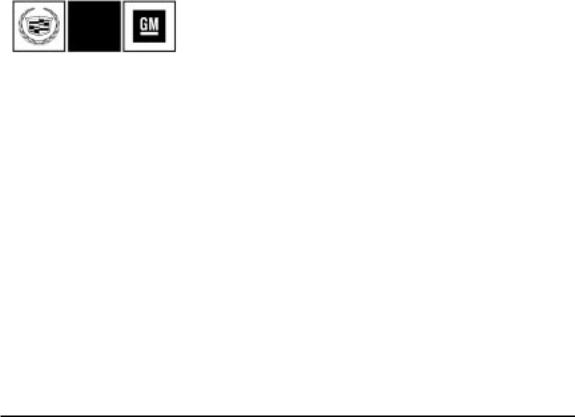
GENERAL MOTORS, GM, the GM Emblem, CADILLAC, the CADILLAC Crest & Wreath, and the name CTS
are registered trademarks of General Motors Corporation.
This manual includes the latest information at the time it was printed. We reserve the right to make changes after that time without notice. For vehicles ®rst sold in Canada, substitute the name ªGeneral Motors
of Canada Limitedº for Cadillac Motor Car Division whenever it appears in this manual.
Keep this manual in the vehicle, so it will be there if it is needed while you are on the road. If the vehicle is sold, leave this manual in the vehicle.
Litho in U.S.A.
Part No. 05CTS A First Edition
Canadian Owners
A French language copy of this manual can be obtained from your dealer or from:
Helm, Incorporated
P.O. Box 07130
Detroit, MI 48207
How to Use This Manual
Many people read the owner manual from beginning to end when they ®rst receive their new vehicle.
If this is done, it can help you learn about the features and controls for the vehicle. Pictures and words
work together in the owner manual to explain things.
Index
A good place to quickly locate information about the vehicle is the Index in the back of the manual. It is an alphabetical list of what is in the manual and
the page number where it can be found.
© Copyright General Motors Corporation 05/14/04
All Rights Reserved
ii
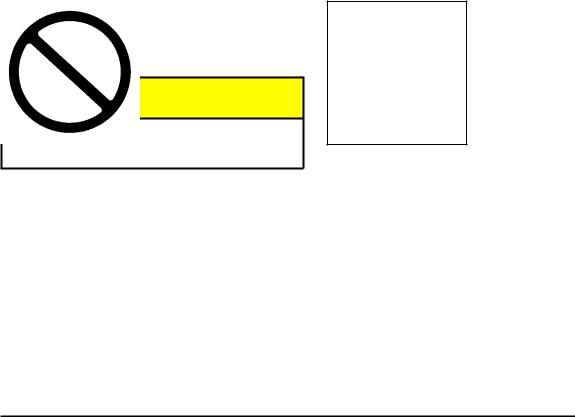
Safety Warnings and Symbols
There are a number of safety cautions in this book. We use a box and the word CAUTION to tell about things that could hurt you if you were to ignore the warning.
{CAUTION:
These mean there is something that could hurt you or other people.
In the caution area, we tell you what the hazard is. Then we tell you what to do to help avoid or reduce the hazard. Please read these cautions. If you do not,
you or others could be hurt.
You will also ®nd a circle with a slash through it in this book. This safety symbol means ªDo Not,º ªDo Not do thisº or ªDo Not let this happen.º
iii

Vehicle Damage Warnings
Also, in this manual you will ®nd these notices:
Notice: These mean there is something that could damage your vehicle.
A notice tells about something that can damage the vehicle. Many times, this damage would not be covered by your vehicle's warranty, and it could be costly. But the notice will tell what to do to help avoid the damage.
When you read other manuals, you might see CAUTION and NOTICE warnings in different colors or in different words.
There are also warning labels on the vehicle. They use the same words, CAUTION or NOTICE.
Vehicle Symbols
The vehicle has components and labels that use symbols instead of text. Symbols are shown along with the text describing the operation or information relating to a speci®c component, control, message, gage, or indicator.
If you need help ®guring out a speci®c name of a component, gage, or indicator, reference the following topics:
·Seats and Restraint Systems in Section 1
·Features and Controls in Section 2
·Instrument Panel Overview in Section 3
·Climate Controls in Section 3
·Warning Lights, Gages, and Indicators in Section 3
·Audio System(s) in Section 3
·Engine Compartment Overview in Section 5
iv
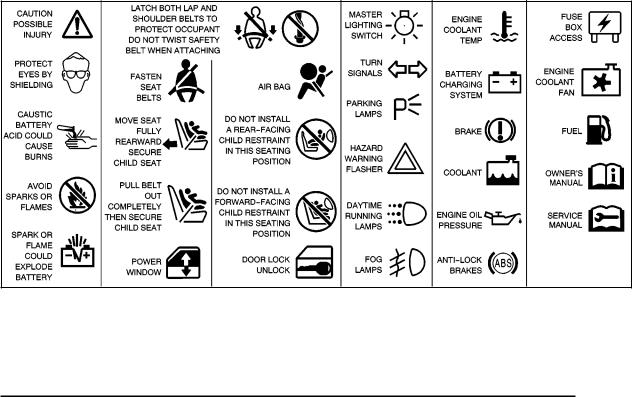
These are some examples of symbols that may be found on the vehicle:
v
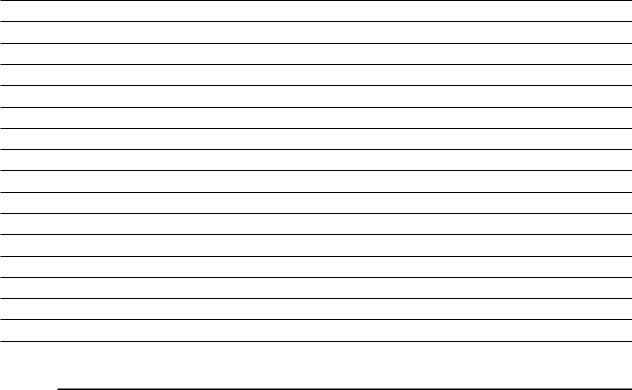
NOTES
vi
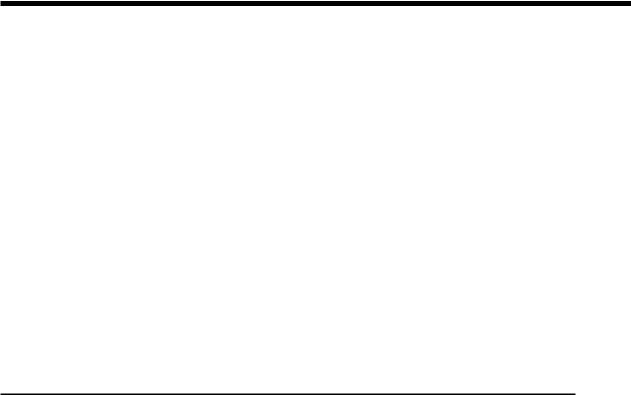
Section 1 Seats and Restraint Systems
Front Seats ...................................................... |
1-2 |
Manual Passenger Seat .................................. |
1-2 |
Power Seats .................................................. |
1-2 |
Power Lumbar ............................................... |
1-3 |
Heated Seats ................................................. |
1-3 |
Reclining Seatbacks ........................................ |
1-4 |
Head Restraints ............................................. |
1-6 |
Rear Seats ....................................................... |
1-6 |
Split Folding Rear Seat ................................... |
1-6 |
Safety Belts ..................................................... |
1-8 |
Safety Belts: They Are for Everyone ................. |
1-8 |
Questions and Answers About Safety Belts ...... |
1-13 |
How to Wear Safety Belts Properly ................. |
1-14 |
Driver Position .............................................. |
1-14 |
Safety Belt Use During Pregnancy .................. |
1-20 |
Right Front Passenger Position ....................... |
1-21 |
Rear Seat Passengers .................................. |
1-22 |
Rear Safety Belt Comfort Guides |
|
for Children and Small Adults ...................... |
1-25 |
Safety Belt Pretensioners ............................... |
1-27 |
Safety Belt Extender ..................................... |
1-27 |
Child Restraints ............................................. |
1-28 |
Older Children .............................................. |
1-28 |
Infants and Young Children ............................ |
1-31 |
Child Restraint Systems ................................. |
1-34 |
Where to Put the Restraint ............................. |
1-36 |
Top Strap .................................................... |
1-37 |
Top Strap Anchor Location ............................. |
1-39 |
Lower Anchorages and Top Tethers for |
|
Children (LATCH System) ........................... |
1-39 |
Securing a Child Restraint Designed for |
|
the LATCH System .................................... |
1-41 |
Securing a Child Restraint in a |
|
Rear Seat Position .................................... |
1-42 |
Securing a Child Restraint in the Right |
|
Front Seat Position .................................... |
1-44 |
Airbag System ............................................... |
1-48 |
Where Are the Airbags? ................................ |
1-50 |
When Should an Airbag In¯ate? ..................... |
1-54 |
What Makes an Airbag In¯ate?....................... |
1-55 |
How Does an Airbag Restrain? ....................... |
1-55 |
What Will You See After an Airbag In¯ates?.....1-56 |
|
Passenger Sensing System ............................ |
1-58 |
Servicing Your Airbag-Equipped Vehicle ........... |
1-62 |
Adding Equipment to Your Airbag-Equipped |
|
Vehicle .................................................... |
1-62 |
Restraint System Check .................................. |
1-63 |
Checking Your Restraint Systems ................... |
1-63 |
Replacing Restraint System Parts |
|
After a Crash ............................................ |
1-63 |
1-1
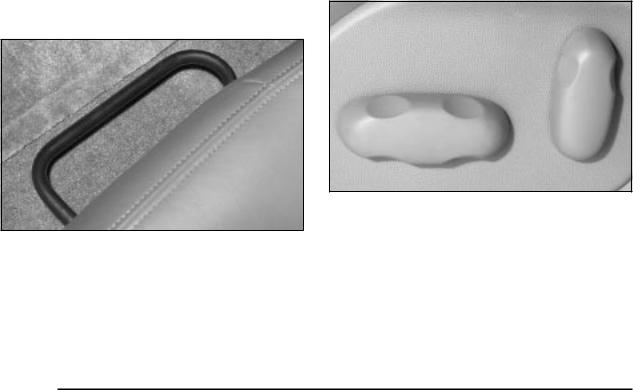
Front Seats |
Power Seats |
Manual Passenger Seat
Your vehicle may have a manual passenger seat. To adjust the seat, lift the bar under the front of the seat to unlock it. Slide the seat to where you want it and
release the bar. Try to move the seat back and forth with your body to be sure the seat is locked in place.
If your vehicle is equipped with power front seats, the controls are located on the outboard sides of the front seat cushions.
·Move the front of the horizontal control up or down to raise or lower the front portion of the cushion.
·Move the rear of the horizontal control up or down to raise or lower the rear portion of the cushion.
·Lift up or push down on the center of the horizontal control to move the entire seat up or down.
·To move the seat forward or rearward, slide the horizontal control forward or rearward.
1-2
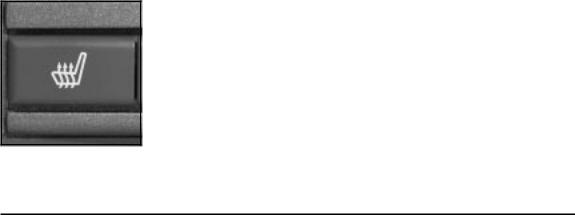
Power Lumbar
Your vehicle may have this feature. The driver's and passenger's seatback lumbar support can be adjusted by moving a control located on the outboard side of the seat cushions.
To increase or decrease support, hold the control forward or rearward. Keep in mind that as your seating position changes, as it may during long trips, so should the position of your lumbar support. Adjust the seat as needed.
Heated Seats
If your vehicle is equipped with heated front seats, the buttons are located on
the climate control panel.
There is one button for the driver and one for the front passenger. Each button has three settings, LO, HI
and off. The active setting appears on the climate control panel display. The LO setting warms the seatback
and cushion until the seat approximates normal body temperature. The HI setting has a slightly higher temperature.
To turn on the heated seats, press the button once. The seat will heat to the HI setting. Press the button again to switch to the LO setting. Pressing the button a third time turns the system off.
The heated seats can only be used when the ignition is turned on. When the vehicle is turned off, the heated seats automatically turn off. If you wish to have the heated seats on once the vehicle is restarted, press the button again.
1-3

Reclining Seatbacks
Manual Recliner
If your vehicle has manual reclining front seatbacks, the levers are located on the outboard sides of the front seats.
Lift the lever to release the seatback, then move the seatback to where you want it. Release the lever to lock the seatback in place. To return the seatback to the upright position, pull up on the lever without pushing on the seatback.
Power Recliner
If your vehicle has power reclining front seatbacks, the control is located on the outboard side of the front seats.
Press the top of the vertical control forward or rearward to adjust the seatback angle.
1-4
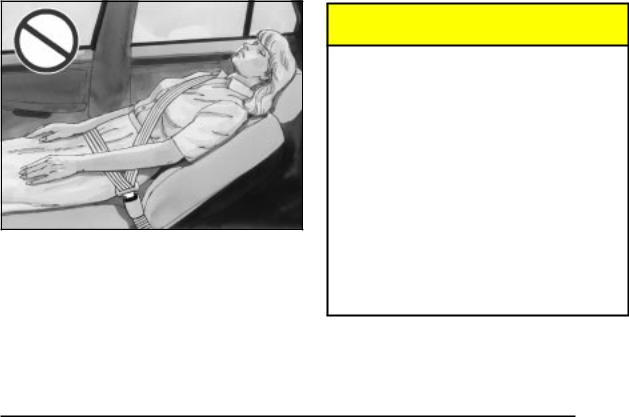
But don't have a seatback reclined if your vehicle is moving.
{CAUTION:
Sitting in a reclined position when your vehicle is in motion can be dangerous. Even if you buckle up, your safety belts can not do their job when you are reclined like this.
The shoulder belt can not do its job. In a crash, you could go into it, receiving neck or other injuries.
The lap belt can not do its job either. In a crash the belt could go up over your abdomen. The belt forces would be there, not at your pelvic bones. This could cause serious internal injuries.
For proper protection when the vehicle is in motion, have the seatback upright. Then sit well back in the seat and wear your safety belt properly.
1-5

Head Restraints
Adjust your head restraint so that the top of the restraint is closest to the top of your head. This position
reduces the chance of a neck injury in a crash.
The front seat head restraints move up and down. Press the button located at the bottom of the head restraint to raise or lower the head restraint. The head restraints tilt forward and rearward, also.
The rear seat head restraints work the same as the front head restraints. You can remove the rear head restraints, also. Press the button located on top of the seatback and pull up on the head restraint to remove it.
Rear Seats
Split Folding Rear Seat
Your vehicle may have a split folding rear seat. A split folding rear seat allows you to carry long cargo by folding down part or all of the rear seat. Before you can fold the rear seatback, you need to unlatch the center seatbelt buckle.
1-6
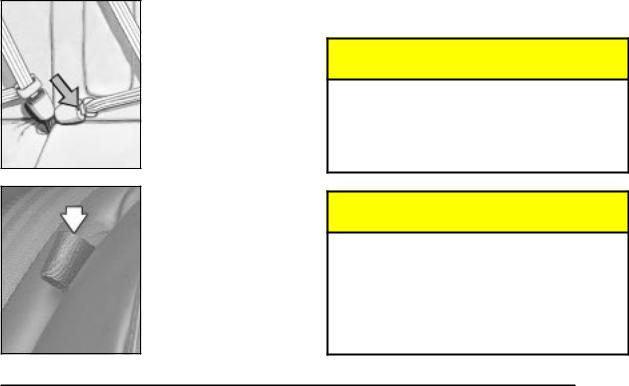
Use the following steps to lower one or both of the rear seatbacks:
1. Insert a tool with a small tip into the slot as shown to unlatch the seatbelt buckle. Then move the belt to the side so it is not
in your way.
2. There is a tab located on the outboard sides of the seatback.
Pull forward on the tab to unlock the seatback.
3.Fold the seatback down. This will allow you direct access to the trunk.
4.Repeat Steps 2 and 3 to fold down the other seatback.
{CAUTION:
If the seatback is not locked, it could move forward in a sudden stop or crash. That could cause injury to the person sitting there. Always press rearward on the seatback to be sure it is locked.
{CAUTION:
A safety belt that is improperly routed, not properly attached, or twisted will not provide the protection needed in a crash. The person wearing the belt could be seriously injured. After raising the rear seatback, always check to be sure that the safety belts are properly routed and attached, and are not twisted.
1-7
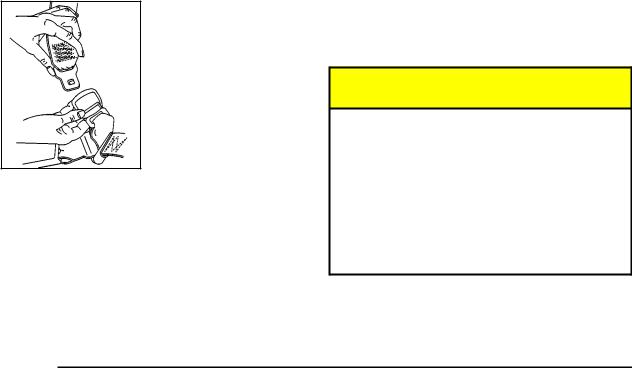
To return the seatback to the upright position, do the following:
1.Lift the seatback up and push it back into place.
2.Reconnect the center safety belt latch plate to the buckle as shown.
3.Make sure the seatback is locked into place by pushing and pulling on it.
4.Repeat Steps 1 and 3 for the other seatback.
When the seatback is not in use, it should be kept in the upright, locked position.
Safety Belts
Safety Belts: They Are for Everyone
This part of the manual tells you how to use safety belts properly. It also tells you some things you should not do with safety belts.
{CAUTION:
Do not let anyone ride where he or she can not wear a safety belt properly. If you are in a crash and you are not wearing a safety belt, your injuries can be much worse. You can hit things inside the vehicle or be ejected from it. You can be seriously injured or killed. In the same crash, you might not be, if you are buckled up. Always fasten your safety belt, and check that your passengers' belts are fastened properly too.
1-8
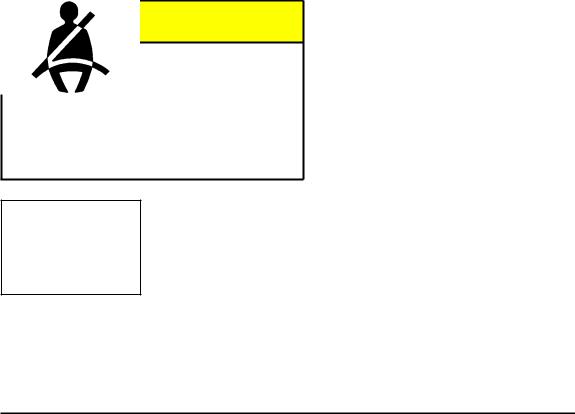
{CAUTION:
It is extremely dangerous to ride in a cargo area, inside or outside of a vehicle. In a collision, people riding in these areas are more likely to be seriously injured or killed. Do not allow people to ride in any area of your vehicle that is not equipped with seats and safety belts. Be sure everyone in your vehicle is in a seat and using a safety belt properly.
Your vehicle has a light that comes on as a reminder to buckle up. See Safety Belt Reminder Light on page 3-38.
In most states and in all Canadian provinces, the law says to wear safety belts. Here is why: They work.
You never know if you will be in a crash. If you do have a crash, you do not know if it will be a bad one.
A few crashes are mild, and some crashes can be so serious that even buckled up, a person would not survive. But most crashes are in between. In many of them, people who buckle up can survive and sometimes walk away. Without belts they could have been badly hurt or killed.
After more than 30 years of safety belts in vehicles, the facts are clear. In most crashes buckling up does matter...a lot!
1-9
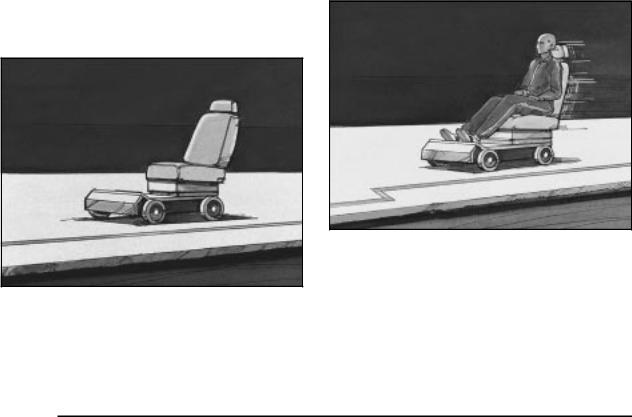
Why Safety Belts Work
When you ride in or on anything, you go as fast as it goes.
Put someone on it.
Take the simplest vehicle. Suppose it is just a seat on wheels.
1-10
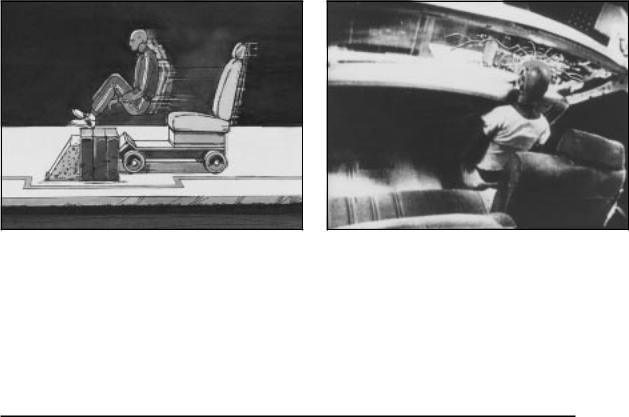
Get it up to speed. Then stop the vehicle. The rider does not stop.
The person keeps going until stopped by something.
In a real vehicle, it could be the windshield...
1-11

or the instrument panel... |
or the safety belts! |
|
With safety belts, you slow down as the vehicle does. |
|
You get more time to stop. You stop over more distance, |
|
and your strongest bones take the forces. That is why |
|
safety belts make such good sense. |
1-12

Questions and Answers About
Safety Belts
Q: Will I be trapped in the vehicle after an accident if I am wearing a safety belt?
A: You could be Ð whether you are wearing a safety belt or not. But you can unbuckle a safety belt, even if you are upside down. And your chance of being conscious during and after an accident,
so you can unbuckle and get out, is much greater if you are belted.
Q: If my vehicle has airbags, why should I have to wear safety belts?
A: Airbags are in many vehicles today and will be in most of them in the future. But they are supplemental systems only; so they work with safety belts Ð not instead of them. Every airbag
system ever offered for sale has required the use of safety belts. Even if you are in a vehicle that has airbags, you still have to buckle up to get the most protection. That is true not only in frontal collisions, but especially in side and other collisions.
Q: If I am a good driver, and I never drive far from home, why should I wear safety belts?
A: You may be an excellent driver, but if you are in an accident Ð even one that is not your fault Ð you and your passengers can be hurt. Being a good driver does not protect you from things beyond your control, such as bad drivers.
Most accidents occur within 25 miles (40 km) of home. And the greatest number of serious
injuries and deaths occur at speeds of less than 40 mph (65 km/h).
Safety belts are for everyone.
1-13
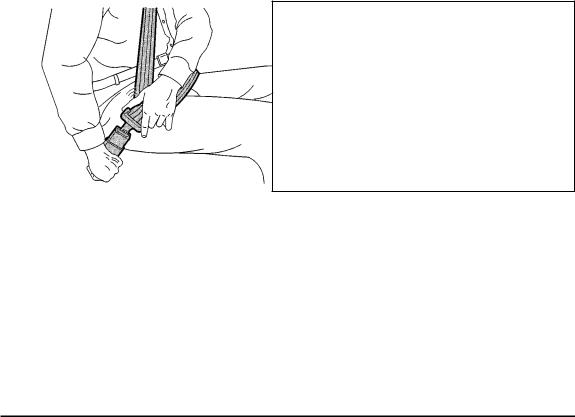
How to Wear Safety Belts Properly
This part is only for people of adult size.
Be aware that there are special things to know about safety belts and children. And there are different rules for smaller children and babies. If a child will be
riding in your vehicle, see Older Children on page 1-28 or Infants and Young Children on page 1-31. Follow those rules for everyone's protection.
First, you will want to know which restraint systems your vehicle has.
We will start with the driver position.
Driver Position
Lap-Shoulder Belt
The driver has a lap-shoulder belt. Here is how to wear it properly.
1.Close and lock the door.
2.Adjust the seat so you can sit up straight. To see how, see ªSeatsº in the Index.
3.Pick up the latch plate and pull the belt across you. Do not let it get twisted.
The shoulder belt may lock if you pull the belt across you very quickly. If this happens, let the belt go back slightly to unlock it. Then pull the belt across you more slowly.
4.Push the latch plate into the buckle until it clicks.
Pull up on the latch plate to make sure it is secure. If the belt is not long enough, see Safety Belt Extender on page 1-27.
Make sure the release button on the buckle is positioned so you would be able to unbuckle the safety belt quickly if you ever had to.
1-14
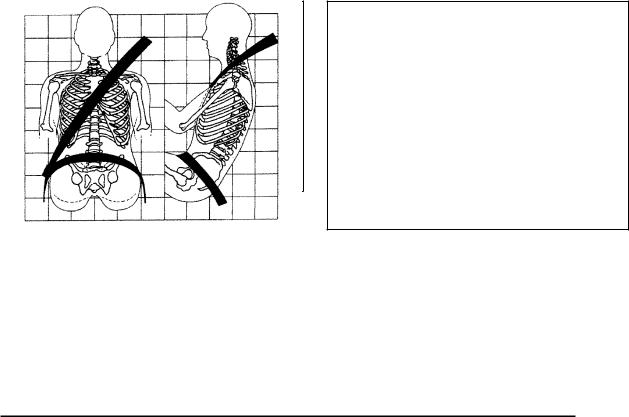
5.To make the lap part tight, pull down on the buckle end of the belt as you pull up on the shoulder belt.
The lap part of the belt should be worn low and snug on the hips, just touching the thighs. In a crash, this applies force to the strong pelvic bones. And you would be less likely to slide under the lap belt. If you slid under it, the belt would apply force at your abdomen. This could cause serious or even fatal injuries. The shoulder belt should go over the shoulder and across the chest. These parts of the body are best able to take belt restraining forces.
The safety belt locks if there is a sudden stop or crash, or if you pull the belt very quickly out of the retractor.
1-15
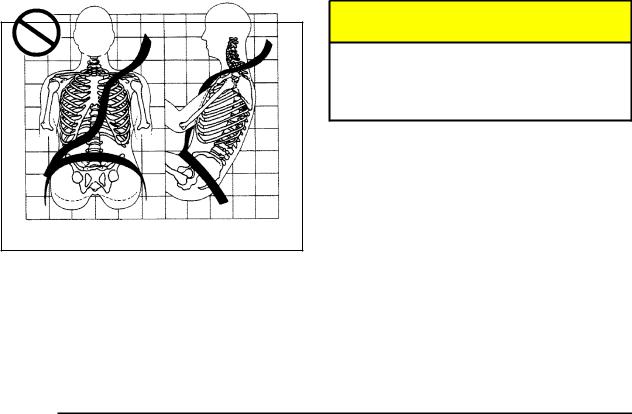
Q: What is wrong with this?
A: The shoulder belt is too loose. It will not give nearly as much protection this way.
{CAUTION:
You can be seriously hurt if your shoulder belt is too loose. In a crash, you would move
forward too much, which could increase injury. The shoulder belt should ®t against your body.
1-16
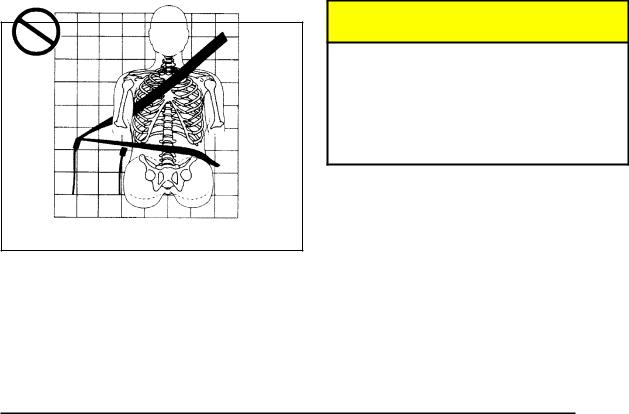
Q: What is wrong with this?
A: The belt is buckled in the wrong place.
{CAUTION:
You can be seriously injured if your belt is buckled in the wrong place like this. In a crash, the belt would go up over your abdomen. The belt forces would be there, not at the pelvic bones. This could cause serious internal injuries. Always buckle your belt into the buckle nearest you.
1-17
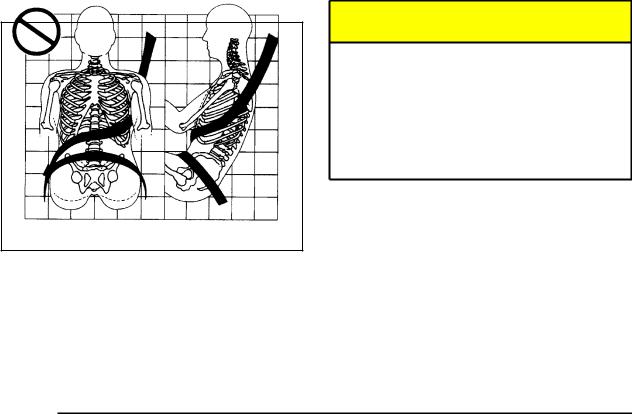
Q: What is wrong with this?
A: The shoulder belt is worn under the arm. It should be worn over the shoulder at all times.
{CAUTION:
You can be seriously injured if you wear the shoulder belt under your arm. In a crash, your body would move too far forward, which would increase the chance of head and neck injury. Also, the belt would apply too much force to the ribs, which are not as strong as shoulder bones. You could also severely injure internal organs like your liver or spleen.
1-18
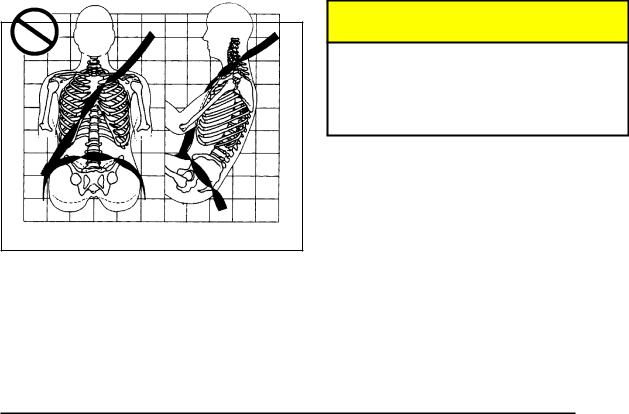
Q: What is wrong with this?
A: The belt is twisted across the body.
{CAUTION:
You can be seriously injured by a twisted belt. In a crash, you would not have the full width of the belt to spread impact forces. If a belt is twisted, make it straight so it can work properly, or ask your dealer to ®x it.
1-19
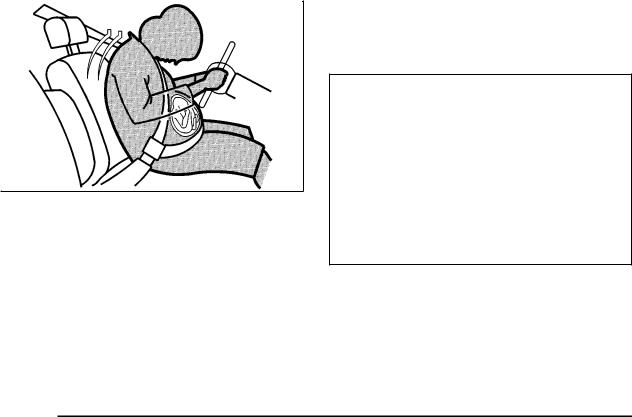
To unlatch the belt, just push the button on the buckle. The belt should go back out of the way.
Before you close the door, be sure the belt is out of the way. If you slam the door on it, you can damage both the belt and your vehicle.
Safety Belt Use During Pregnancy
Safety belts work for everyone, including pregnant women. Like all occupants, they are more likely to be seriously injured if they do not wear safety belts.
A pregnant woman should wear a lap-shoulder belt, and the lap portion should be worn as low as possible, below the rounding, throughout the pregnancy.
1-20
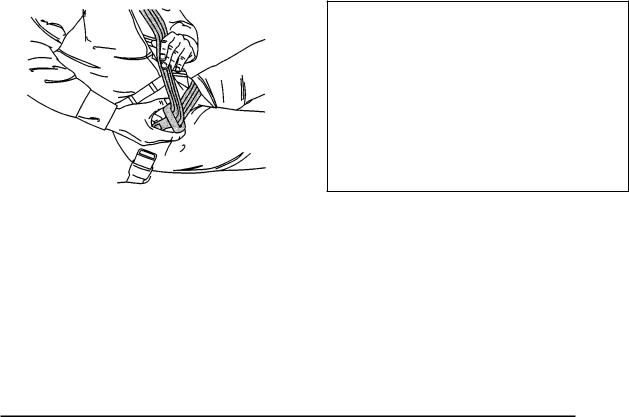
The best way to protect the fetus is to protect the mother. When a safety belt is worn properly, it is more likely that the fetus will not be hurt in a crash. For pregnant women, as for anyone, the key to making safety belts effective is wearing them properly.
Right Front Passenger Position
To learn how to wear the right front passenger's safety belt properly, see Driver Position on page 1-14.
The right front passenger's safety belt works the same way as the driver's safety belt Ð except for the following.
If you ever pull the shoulder portion of the belt out all the way, you will engage the child restraint locking feature. If this happens, just let the belt go back all the way and start again.
If the belt stops before it reaches the buckle, tilt the latch plate and keep pulling until you can buckle the belt.
1-21
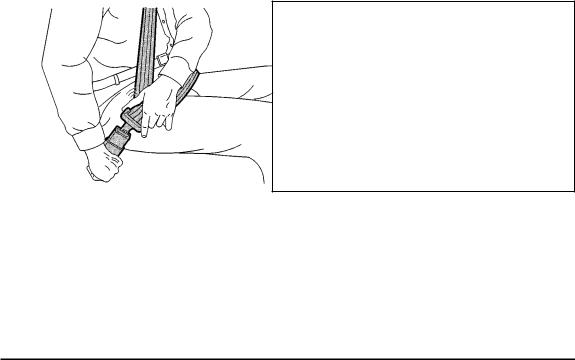
Rear Seat Passengers
It is very important for rear seat passengers to buckle up! Accident statistics show that unbelted people in the rear seat are hurt more often in crashes than those who are wearing safety belts.
Rear passengers who are not safety belted can be thrown out of the vehicle in a crash. And they can strike others in the vehicle who are wearing safety belts.
Lap-Shoulder Belt
All rear seating positions have lap-shoulder belts. Here is how to wear one properly.
1.Pick up the latch plate and pull the belt across you. Do not let it get twisted.
The shoulder belt may lock if you pull the belt across you very quickly. If this happens, let the belt go back slightly to unlock it. Then pull the belt across you more slowly.
1-22
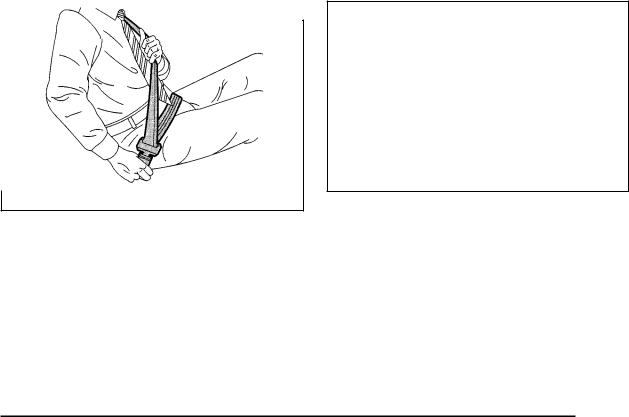
2. Push the latch plate into the buckle until it clicks.
If the belt stops before it reaches the buckle, tilt the latch plate and keep pulling until you can buckle it.
Pull up on the latch plate to make sure it is secure.
If the belt is not long enough, see Safety Belt Extender on page 1-27.
Make sure the release button on the buckle is positioned so you would be able to unbuckle the safety belt quickly if you ever had to.
3.To make the lap belt part tight, pull down on the buckle end of the belt as you pull up on the shoulder part.
1-23
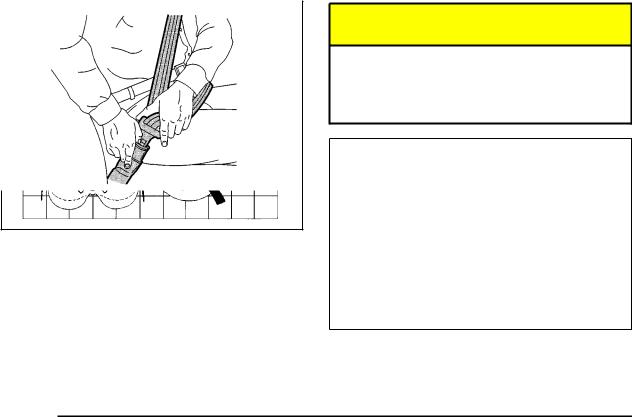
The lap part of the belt should be worn low and snug on the hips, just touching the thighs. In a crash,
this applies force to the strong pelvic bones. And you would be less likely to slide under the lap belt. If you slid under it, the belt would apply force at your abdomen. This could cause serious or even fatal injuries. The shoulder belt should go over the shoulder and across the chest. These parts of the body are best able to
take belt restraining forces.
The safety belt locks if there is a sudden stop or a crash, or if you pull the belt very quickly out of the retractor.
{CAUTION:
You can be seriously hurt if your shoulder belt is too loose. In a crash, you would move
forward too much, which could increase injury. The shoulder belt should ®t against your body.
To unlatch the belt, just push the button on the buckle.
1-24
